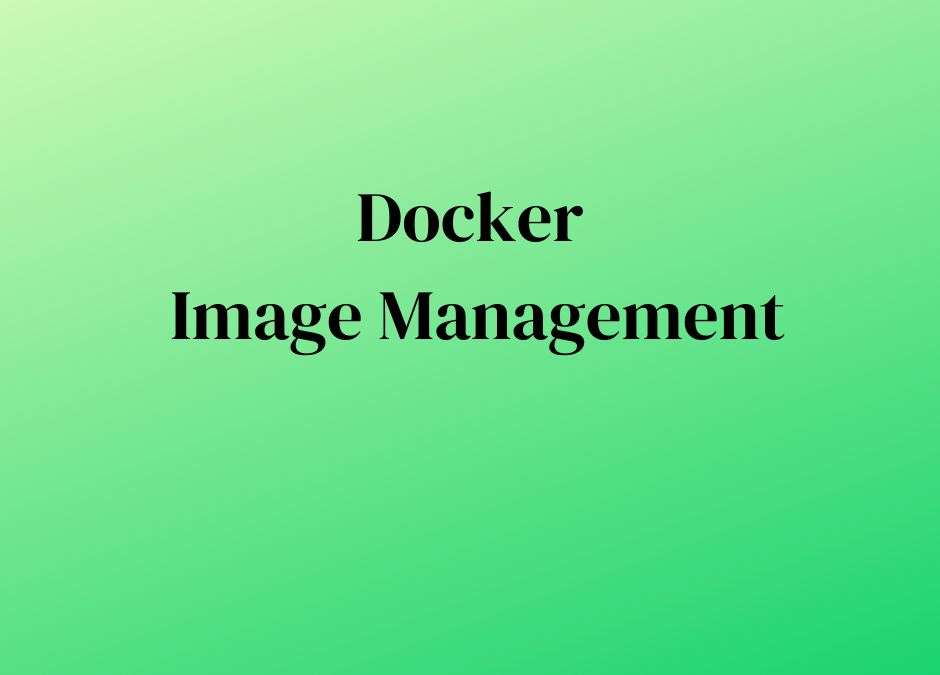In the world of containerization, Docker has emerged as a powerful tool for packaging, distributing, and managing applications. Two fundamental aspects of Docker are creating a local image repository and building images using Dockerfile. In this blog, we’ll delve into these topics in detail, exploring their significance and practical implementation.
Creating Local Image Repository:
A local image repository serves as a centralized storage location for Docker images, allowing users to store and manage their custom-built images. Setting up a local image repository provides several benefits, including improved accessibility, enhanced security, and efficient image distribution within an organization.
To create a local image repository, follow these steps:
1. Installation: Begin by installing Docker on your system if you haven’t already. Docker provides comprehensive documentation and installation guides for various platforms, making the process straightforward.
2. Configuration: Once Docker is installed, configure your Docker environment to use a local repository. Docker allows users to specify the location of the repository using the ‘docker run’ command or by modifying the Docker configuration file.
3. Building Images: With Docker configured to use the local repository, you can start building Docker images using the ‘docker build’ command. This command reads instructions from a Dockerfile (more on this later) and creates a new image based on those instructions.
4. Tagging and Pushing: After building an image, tag it with a descriptive name using the ‘docker tag’ command. Once tagged, you can push the image to your local repository using the ‘docker push’ command.
5. Managing Images: Docker provides various commands for managing images in the local repository, such as listing available images (‘docker images’), removing images (‘docker rmi’), and inspecting image details (‘docker inspect’).
Building an Image using Dockerfile:
Dockerfile is a text-based configuration file used to define the steps and instructions for building a Docker image. It allows users to automate the image creation process, ensuring consistency and repeatability across different environments.
To build an image using Dockerfile, follow these steps:
1. Create Dockerfile: Start by creating a new text file named ‘Dockerfile’ in your project directory. This file will contain the instructions for building the Docker image.
2. Define Base Image: The first line of the Dockerfile specifies the base image to use for the new image. Choose an appropriate base image that suits your application requirements, such as Alpine Linux, Ubuntu, or a specific programming language runtime.
3. Add Dependencies: Use the appropriate commands in the Dockerfile to install any dependencies or software packages required by your application. For example, use ‘RUN apt-get install’ for installing packages on Debian-based systems.
4. Copy Application Files: If your application consists of multiple files or directories, use the ‘COPY’ or ‘ADD’ command in the Dockerfile to copy these files into the image.
5. Expose Ports (if needed): If your application exposes any network ports, use the ‘EXPOSE’ command in the Dockerfile to specify which ports should be exposed to the host system.
6. Define Startup Command: Finally, use the ‘CMD’ or ‘ENTRYPOINT’ command in the Dockerfile to specify the command that should be executed when the container starts.
7. Build Image: Once the Dockerfile is defined, use the ‘docker build’ command to build the Docker image based on the instructions in the Dockerfile. Provide the path to the directory containing the Dockerfile as an argument to the ‘docker build’ command.
8. Test Image: After building the image, you can test it locally using the ‘docker run’ command to launch a container based on the newly created image.
By following these steps, you can create a local image repository and build custom Docker images using Dockerfile. These practices form the foundation of effective Docker-based development and deployment workflows, enabling greater agility, scalability, and consistency in application delivery.
Experience top-tier DevOps training with job guarantee at SparkDatabox. Our comprehensive courses not only equip you with in-demand skills but also offer assurance of securing a rewarding job post-completion. With SparkDatabox, you’ll receive expert guidance, hands-on experience, and dedicated support to kickstart your career in DevOps confidently.

